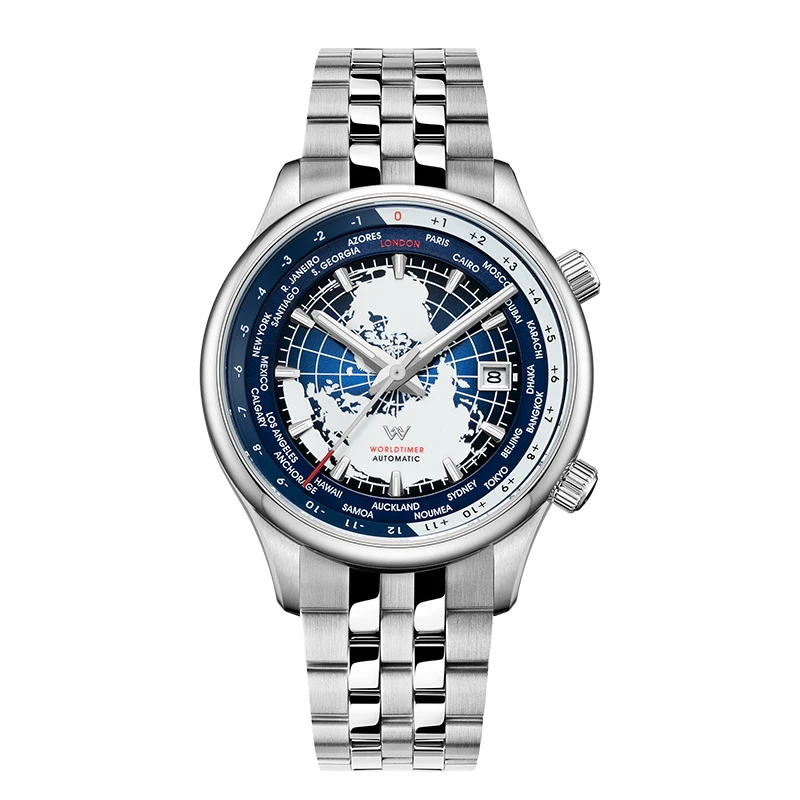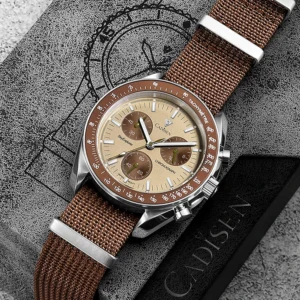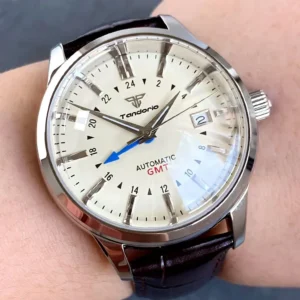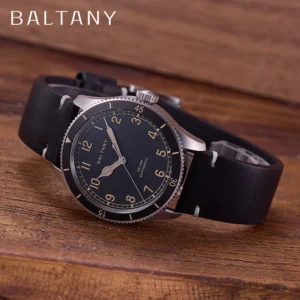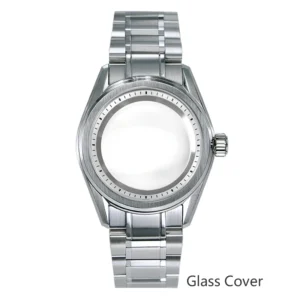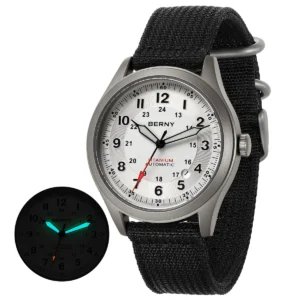Understanding Timezone Complications in Modern Horology
In the world of fine watchmaking, a “complication” refers to any function beyond simple time-telling. Timezone complications specifically allow wearers to track multiple time zones simultaneously—a feature that has proven invaluable for pilots, frequent travelers, and international professionals alike.
These specialized mechanisms emerged from genuine necessity. Early aviators depended on precise timekeeping for navigation, fuel calculations, and flight planning across different regions. As commercial air travel expanded, pilots needed reliable instruments to track both local time and Greenwich Mean Time (GMT) simultaneously.
Today, timezone complications fall into three main categories: GMT, Dual Time, and World Timer. Each offers distinct approaches to solving the same fundamental challenge: keeping track of time in multiple places at once.
What’s remarkable is how these mechanical marvels remain relevant in our digital age. While smartphones automatically adjust to new time zones, the immediacy and reliability of a well-crafted mechanical watch provides pilots and travelers with instant access to critical time information without requiring power sources, internet connectivity, or screen navigation.
The evolution of these specialized features represents an important chapter in the history of dive watch engineering, as both diving and aviation watches emerged from the need for specialized timekeeping in professional environments.
The Evolution of Timezone Complications: From Navigation Tools to Luxury Accessories
The story of timezone complications begins with practical necessity. Long before GPS and digital instruments, pilots and navigators relied on precise mechanical timepieces to determine position and track flight times across different regions.
In the mid-20th century, as international air travel became commercial reality, the first purpose-built GMT watches emerged. These watches were designed specifically for pilots crossing multiple time zones, featuring an additional hand that completed one rotation every 24 hours, allowing simultaneous tracking of two time zones.
World timers evolved from complex pocket watch mechanisms to wrist-worn instruments that could display the time in all major time zones simultaneously. Early versions required extensive manufacturing skill to create the intricate city discs and multiple hands needed to display global time.
Over decades, these practical tools transformed into coveted luxury accessories without abandoning their functionality. Modern manufacturing techniques have allowed for slimmer profiles, improved legibility, and enhanced durability. The basic principles remain unchanged, but execution has reached new heights of precision and refinement.
These timepieces share developmental parallels with dive watches, which underwent similar evolution in dive watch technology from purely functional tools to refined luxury timepieces that maintain their technical capabilities.
GMT Complications: The Pilot’s Essential Companion
The GMT complication takes its name from Greenwich Mean Time, the standard time against which all world time zones were traditionally measured (now replaced by Coordinated Universal Time or UTC). This complication was specifically developed to meet the needs of commercial airline pilots.
A typical GMT watch features:
- A standard 12-hour display with hour, minute, and seconds hands
- An additional GMT hand that completes one rotation every 24 hours
- A fixed or rotating 24-hour bezel or scale
- Date function (in most models)
GMT watches come in two main variations, each offering distinct advantages:
Caller GMT (Standard GMT): The additional 24-hour hand is independently adjustable, while the main hour hand remains fixed. This setup is ideal for tracking a second time zone while maintaining your home time as reference.
True GMT (Traveler GMT): The main hour hand jumps in one-hour increments without affecting minutes or seconds. This allows you to quickly adjust local time upon arrival in a new time zone while the 24-hour GMT hand continues to display home time.
For pilots, the True GMT configuration proves particularly valuable. It enables logging flight time in UTC (required for official records) while simultaneously tracking local time at departure and destination points. The independently adjustable hour hand makes adapting to new time zones effortless without losing reference time.
The GMT pilot watches category includes numerous examples designed specifically for aviation professionals, featuring high-contrast dials and easy-to-grip crowns for adjustments even while wearing gloves.
World Timer Complications: The Global Perspective
World timer watches represent the most comprehensive approach to tracking multiple time zones. Unlike GMT watches that typically track two zones, a world timer simultaneously displays the time across all major time zones around the globe.
The standard world timer mechanism includes:
- A central dial showing local time
- A 24-hour ring or disc that rotates once per day
- An outer city ring representing 24 major time zones
- A reference marker for aligning your current location
Reading a world timer requires understanding the relationship between these elements. The city ring aligns with the 24-hour disc, allowing you to read the current time in any displayed city by finding its position on the ring and reading the corresponding hour on the 24-hour disc.
Setting a world timer typically involves:
1. Setting your local time with traditional hands
2. Aligning your current city with the current hour on the 24-hour disc
3. Reading other cities’ times directly from the 24-hour scale
The primary advantage of world timers is their comprehensive global view. Business executives maintaining contact with multiple international offices can instantly see when colleagues worldwide are within working hours. For frequent travelers visiting multiple destinations, this global perspective proves invaluable for planning communications.
The visual complexity of these watches often results in striking designs, with concentric rings and detailed city names creating distinctive aesthetic signatures. However, this visual density can sometimes reduce legibility compared to simpler GMT displays.
For those interested in understanding the functional differences between these complications, our guide to understanding GMT and world time watches provides detailed comparisons.
Dual Time Complications: Simplicity Meets Functionality
Dual Time complications offer perhaps the most straightforward approach to tracking two time zones. Unlike GMT watches with their 24-hour scales, dual time watches typically display both time zones in familiar 12-hour formats, making them exceptionally intuitive to read.
These watches generally employ one of two approaches:
Sub-dial Implementation: A separate smaller dial displays the second time zone, often with its own hour and minute hands.
Twin Hour Hands: Two hour hands share the main dial, typically distinguished by different colors, shapes, or sizes.
Most dual time watches include AM/PM indicators for the second time zone to prevent confusion between day and night hours—a critical feature when coordinating across significant time differences. These indicators may take the form of small windows, sub-dials, or color-coded zones.
The primary advantage of dual time watches is their immediate readability. Both time zones appear in the familiar 12-hour format, requiring no mental conversion from a 24-hour scale. This makes them particularly well-suited for business travelers who need quick reference to home and local times during international calls or meetings.
Setting procedures vary by manufacturer, but typically involve independent adjustment of the second time display through the crown or dedicated pushers. This allows quick updates when crossing time zones without disturbing the accuracy of the primary time display.
For those deciding between these options, our comprehensive GMT versus dual time watches guide explores the practical differences between these approaches in depth.
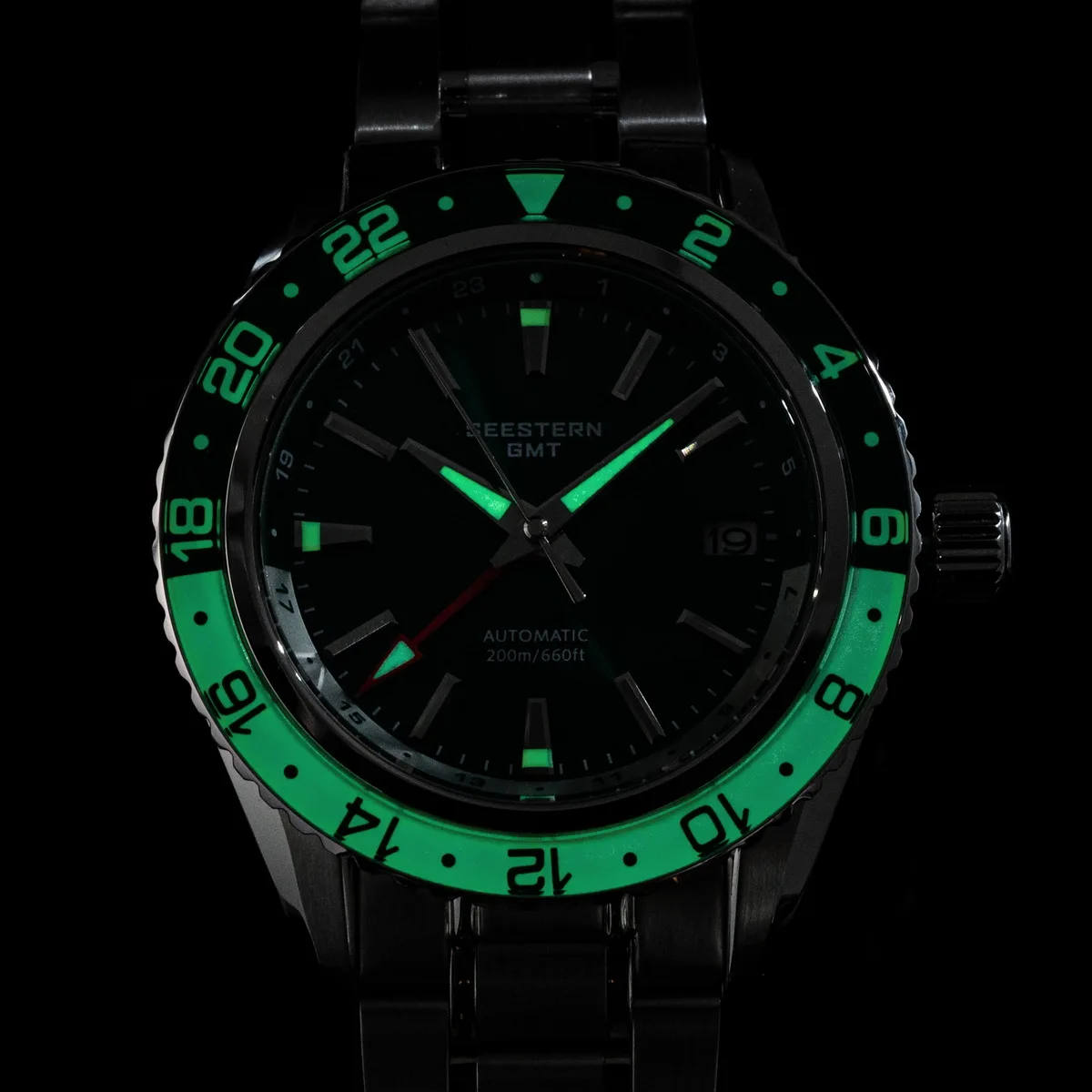
Comparing Timezone Complications: Choosing the Right One for Your Needs
When selecting a timezone watch, matching the complication to your specific travel patterns and information needs is crucial. The following comparison highlights the strengths and limitations of each approach:
| Feature | GMT | World Timer | Dual Time |
|---|---|---|---|
| Zones tracked | 2 | 24+ | 2 |
| Reading ease | Moderate | Complex | Simple |
| Setting complexity | Low | High | Low |
| Visual complexity | Moderate | High | Low-Moderate |
| Typical price range | $$$-$$$$ | $$$$-$$$$$ | $$-$$$$ |
| Best for | Pilots, travelers to single destinations | International executives, global travelers | Business travelers, frequent callers to another region |
For Pilots: GMT complications, particularly True GMT models, remain the gold standard. Their combination of UTC reference, local time adjustment, and relative simplicity aligns perfectly with cockpit requirements. The ability to track Zulu time (aviation’s term for UTC) while adjusting to local time makes flight logging and planning straightforward.
For Business Travelers: Dual Time complications offer exceptional clarity when managing schedules between home office and destination. The familiar 12-hour format for both zones minimizes confusion during potentially jet-lagged decision making.
For Global Executives: World Timers provide the comprehensive overview needed when coordinating across multiple international offices. The ability to instantly see working hours across different continents facilitates planning international calls and meetings.
For Recreational Travelers: Standard GMT watches offer the best balance of functionality and value, providing essential dual-zone tracking without unnecessary complexity.
Consider your typical travel pattern—if you routinely visit the same secondary location (like a company branch office), a simple GMT or Dual Time watch suffices. For those who travel to different global destinations regularly, the versatility of a World Timer may justify its added complexity.
Our GMT automatic watches collection showcases various implementations to suit different preferences and travel needs.
Essential Features of Pilot Watches Beyond Timezone Tracking
While timezone complications form the functional core of pilot watches, several additional features enhance their utility in aviation environments:
Enhanced Legibility: Pilot watches typically feature high-contrast dials with large numerals and distinctive hand shapes that can be read at a glance. This isn’t merely aesthetic—in turbulence or during complex maneuvers, immediate readability becomes safety-critical.
Oversized Crowns: Many pilot watches include larger-than-average crowns designed to be operated while wearing flight gloves. These crowns often feature deep knurling for positive grip even in turbulence.
Anti-Magnetic Protection: Aircraft cockpits contain numerous electronic instruments that generate magnetic fields. Quality pilot watches include protection against these fields to maintain accuracy.
Secure Straps: Pilot watches typically feature extra-secure strap systems—whether NATO-style pass-through straps or bracelets with secondary locking clasps—to prevent loss during sudden maneuvers.
Slide Rule Bezels: Some pilot watches incorporate circular slide rules on rotating bezels, allowing quick calculation of fuel consumption, distance/time ratios, and conversion between units without requiring electronic calculators.
Chronograph Integration: Many pilot watches combine timezone tracking with chronograph (stopwatch) functionality, enabling precise timing of flight legs, fuel burn intervals, and other critical measurements.
Understanding these additional features can help pilots select watches that deliver maximum utility in professional environments. Our guide to mastering essential pilot chronograph features explores these specialized functions in greater detail.
Essential Features of Travel Watches Beyond Timezone Tracking
Travel watches must balance functionality with practical wearability across diverse environments and situations:
Comfort Considerations: Unlike pilot watches primarily worn in cockpits, travel watches must remain comfortable during long-haul flights, business meetings, and tourist activities. Moderate case sizes (typically 38-42mm) and carefully designed case profiles minimize bulk while maintaining presence.
Versatile Aesthetics: The ideal travel watch transitions seamlessly between business and casual settings. Balanced designs with medium dial complexity work equally well with business attire or casual clothing.
Water Resistance: While not dive watches, quality travel watches offer at least 100m water resistance to handle unexpected downpours, pool splashes, or impromptu beach visits without concern.
Robust Construction: Travel exposes watches to luggage impacts, varied climates, and diverse environments. Quality travel watches feature scratch-resistant sapphire crystals, solid case construction, and secured bezels that maintain integrity despite these challenges.
Extended Power Reserve: Longer power reserves (48+ hours) allow the watch to remain accurate over weekend trips without requiring wear or manual winding. This becomes particularly valuable during multi-destination itineraries with varied activity levels.
Comfortable Straps with Quick-Change Systems: Modern travel watches often feature quick-change strap systems allowing easy transition between bracelet, leather, or rubber options to match different activities and climates without requiring tools.
The automatic pilot watches category includes numerous models that balance these travel-friendly features with precise timezone tracking capabilities.
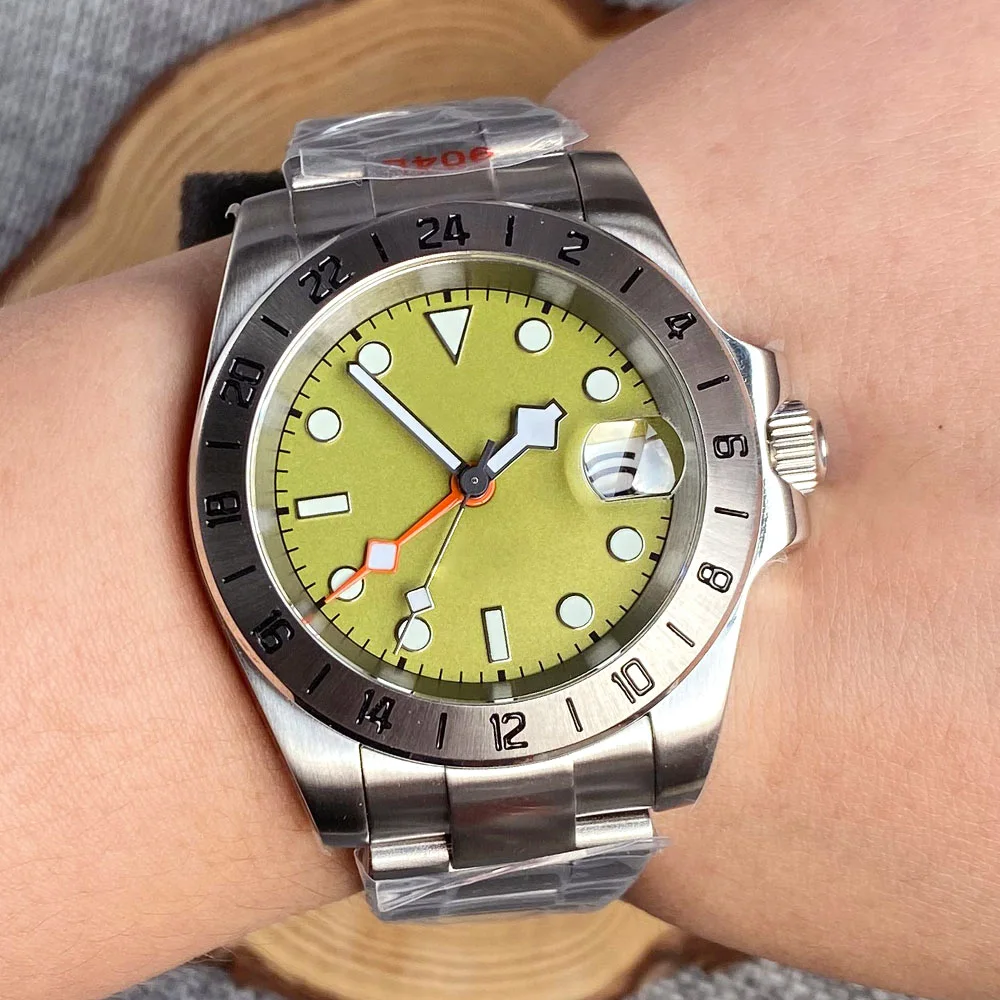
How to Use Timezone Complications: A Practical Guide
Setting and Using a GMT Watch:
- Pull the crown to position 1 (first click) and wind the movement if it’s not automatic or needs power
- Pull to position 2 (second click) to set the time
- For Caller GMT: Set local time normally, then return crown to position 1 to adjust the GMT hand to your reference time zone
- For True GMT: Set the GMT hand to your home time using the 24-hour scale, then use position 1 to adjust the main hour hand to local time
To track a third time zone with a rotating 24-hour bezel:
1. Calculate the hour difference between your secondary reference zone and GMT
2. Rotate the bezel by that many clicks/hours
3. Read the third time zone by seeing where the GMT hand points on the bezel
Setting and Using a World Timer:
- Set your local time using the main hands
- Align your current city with the current hour on the 24-hour ring (typically using a pusher or rotating bezel)
- Read other cities’ times by finding them on the city ring and noting the corresponding hour on the 24-hour ring
Setting and Using a Dual Time Watch:
- Set your primary time zone normally
- Adjust the secondary time display using the dedicated crown position or pusher
- Check AM/PM indicators for the secondary zone to confirm day/night
Handling Daylight Saving Time:
When regions change to or from daylight saving time, you’ll need to adjust your watch accordingly:
* For GMT watches: Adjust either the main hands or GMT hand by one hour
* For World Timers: Temporarily reset the city alignment
* For Dual Time: Adjust the affected time zone display
Understanding these timezone functions enhances travel experiences significantly, as explored in our guide to understanding GMT complications in dive watches.
Automatic Chronograph Watches, Chronograph Pilot Watches
Price range: $233.36 through $237.58 Select options This product has multiple variants. The options may be chosen on the product pageClassic Automatic Dress Watches, GMT Automatic Watches, GMT Pilot Watches
Price range: $1,240.86 through $1,463.33 Select options This product has multiple variants. The options may be chosen on the product pageClassic Automatic Dress Watches, GMT Automatic Watches, GMT Dive Watches
Price range: $468.93 through $552.94 Select options This product has multiple variants. The options may be chosen on the product pageClassic Pilot Watches, Military Inspired Automatic Watches
$561.00 Select options This product has multiple variants. The options may be chosen on the product pageGMT Automatic Watches, Unique Automatic Watches
$420.10 Select options This product has multiple variants. The options may be chosen on the product pageClassic Field Watches, Classic Pilot Watches, Rugged Automatic Watches, Titanium Automatic Watches
Price range: $425.24 through $496.28 Select options This product has multiple variants. The options may be chosen on the product page
Mechanical Engineering Behind Timezone Complications
The mechanical ingenuity required to create timezone complications represents watchmaking at its finest. These mechanisms must maintain accuracy while performing additional functions beyond basic timekeeping.
In GMT watches, the challenge lies in creating an additional independent hand that rotates at exactly half the speed of the standard hour hand. This requires a separate gear train that reduces rotation by precisely 50% while maintaining perfect synchronization with the primary timekeeping system.
True GMT mechanisms add another layer of complexity by enabling the main hour hand to jump in precise one-hour increments without affecting minutes or seconds. This “jumping hour” mechanism requires intricate star wheels and springs to create controlled, discrete movements rather than continuous rotation.
World timers represent the pinnacle of timezone complexity. Their mechanisms must coordinate multiple rotating elements—the 24-hour ring, city disc, and standard hands—while maintaining perfect alignment and allowing user adjustments. The city disc alone requires extremely precise printing and positioning of 24 city names around a tiny circumference.
These engineering challenges explain why quality timezone watches command premium prices. Each additional complication exponentially increases manufacturing complexity, assembly time, and quality control requirements. The precision machining required for these components often involves tolerances measured in microns—thinner than a human hair.
The development of these mechanisms parallels other watchmaking innovations, as documented in the timeline of diving watch innovations.
Can You Have Multiple Timezone Complications in One Watch?
Yes, many manufacturers combine timezone complications with additional functions to create highly capable timepieces. These hybrid designs offer remarkable versatility but require careful implementation to maintain usability.
Common combinations include:
GMT-Chronograph Hybrids: These watches combine timezone tracking with precise timing functionality. The GMT hand tracks a second time zone while chronograph subdials measure elapsed time intervals—ideal for pilots timing flight legs while maintaining timezone awareness.
World Timer-Chronograph Watches: These complex watches combine global time tracking with stopwatch functions, though the resulting dial can become quite busy. Manufacturers often use color coding and varied hand shapes to maintain readability.
Annual Calendar GMT Watches: By combining date tracking (including month and sometimes day) with GMT functionality, these watches minimize the need for date adjustments when crossing time zones or international date lines.
The primary challenge with multi-complication watches is maintaining legibility and ease of operation. As functions multiply, dials become more crowded and setting procedures more complex. The best examples use thoughtful layout and color-coding to preserve readability despite their complexity.
These combination watches particularly shine in professional contexts where multiple timing functions are needed simultaneously, as seen in many GMT dive watches that combine depth timing with timezone tracking.
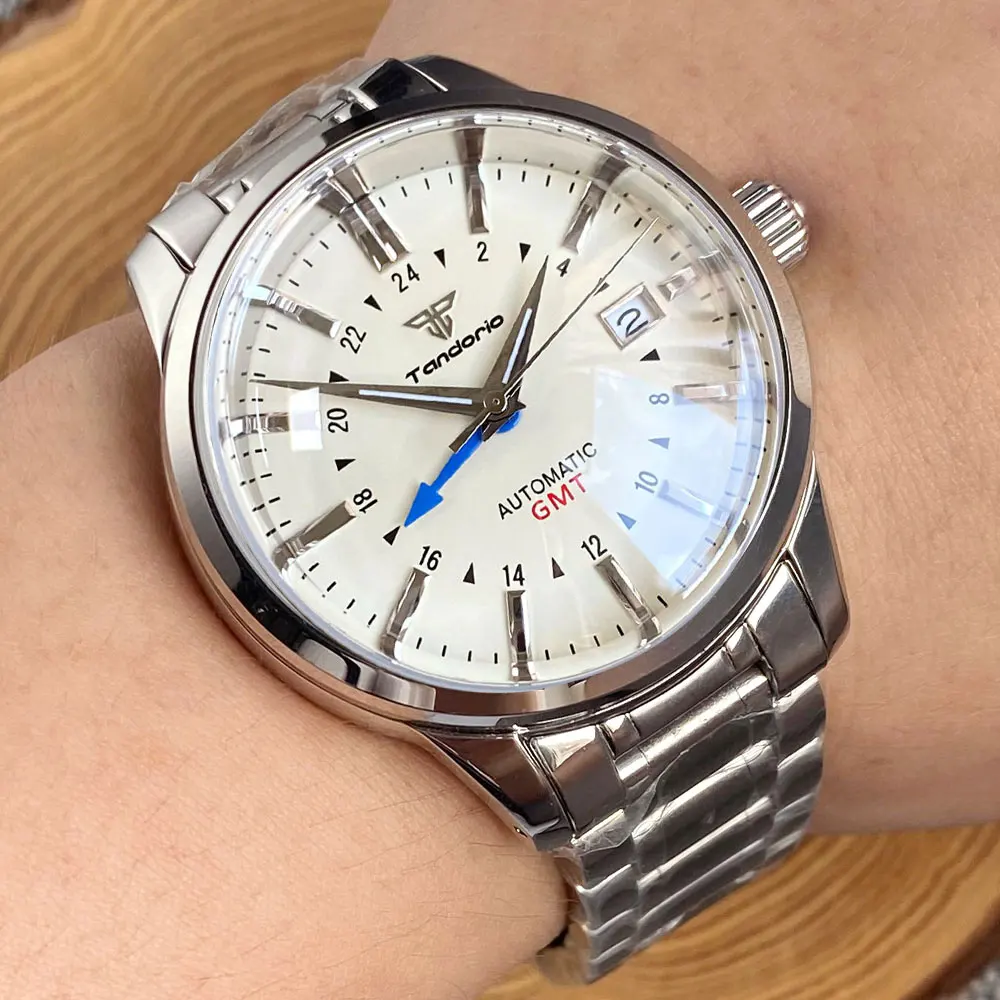
Is a Timezone Complication Still Relevant in the Digital Age?
While smartphones automatically adjust to local time zones, mechanical timezone watches retain significant practical and emotional advantages that explain their continued popularity.
From a practical standpoint, mechanical watches offer several benefits over digital alternatives:
* Immediate reference without waking screens or navigating menus
* No battery concerns during extended travel
* Function in environments where electronics must be limited or disabled
* Reliability independent of connectivity or battery status
* Glance-ability during meetings or social situations where checking phones may appear rude
Beyond practicality, mechanical timezone watches represent remarkable achievements in miniaturized engineering. The ability to track multiple time zones through purely mechanical means—without processors or power sources—represents human ingenuity at its finest.
For many wearers, these watches also serve as tangible connections to aviation history and the golden age of global exploration. Each glance at the wrist connects them to generations of pilots and travelers who relied on similar instruments.
This combination of practical utility, engineering appreciation, and emotional connection ensures that mechanical timezone complications remain relevant despite digital alternatives.
How to Choose the Right Timezone Watch for Your Needs
Selecting the ideal timezone watch requires matching features to your specific travel patterns and preferences:
For Occasional Travelers:
* Consider a standard GMT watch with fixed 24-hour scale
* Look for dual-purpose designs that work in both business and casual settings
* Balance functionality with everyday wearability
For Frequent Business Travelers:
* True GMT functionality allows quick local time adjustment without losing home time reference
* Look for excellent day/night indication to avoid mistimed calls home
* Consider models with date complications that adjust with the local hour hand
For International Professionals:
* World Timers provide comprehensive global awareness
* Consider models with city discs that include your most-visited locations
* Look for designs that balance information density with readability
For Pilots:
* Focus on True GMT models with excellent legibility
* Consider chronograph functionality for timing flight legs
* Prioritize models with proven reliability in aviation environments
Budget Considerations:
* Entry-level GMT functionality appears in watches across various price points
* World Timers generally command higher prices due to mechanism complexity
* Consider microbrands for value-oriented options with solid functionality
Most importantly, choose a watch that you genuinely enjoy wearing. The best timezone watch is one that suits both your functional needs and personal aesthetic preferences.
What Should You Know About Servicing Watches with Timezone Complications?
Timezone complications add complexity to watch movements, which has implications for long-term maintenance and care:
Service Intervals: Watches with timezone complications typically follow standard service recommendations (3-5 years), but their additional complexity makes regular maintenance particularly important. Neglecting service can lead to increased wear on specialized components that may be more difficult to replace.
Service Complexity: The additional mechanisms require specialized knowledge to service properly. Always choose watchmakers with specific experience servicing your watch type, particularly for world timers with their intricate city discs and coordination systems.
Common Issues: Timezone complications may develop specific issues like misalignment between 24-hour hands and scales, jumping hour mechanisms that don’t fully engage, or city discs that slip from their proper positions. These require prompt attention to prevent further damage.
Cost Considerations: Service costs for complicated watches typically exceed those for time-only models, reflecting the additional time and expertise required. Budget accordingly and consider service costs as part of the total ownership expense.
Preventive Care: Avoid adjusting timezone functions during the “danger zone” hours when date mechanisms are engaged (typically between 9pm-3am). This prevents undue stress on components. Additionally, if your watch sees infrequent use, consider a watch winder to maintain proper function of all complications.
By understanding these maintenance considerations, you’ll ensure your timezone watch provides reliable service throughout years of global adventures.

